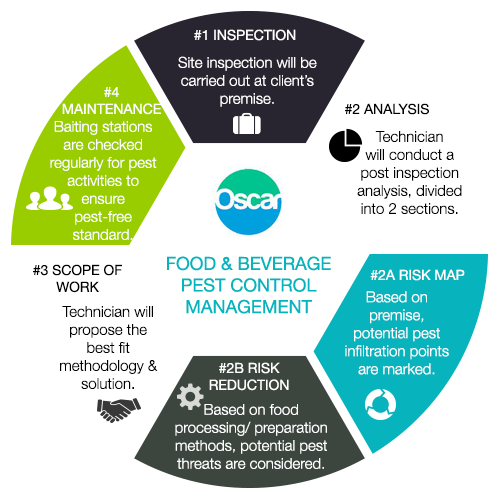Maximize Your Expertise Of Rodent Nesting Patterns To Defeat These Parasites And Refine Your Rodent Administration Methods
Maximize Your Expertise Of Rodent Nesting Patterns To Defeat These Parasites And Refine Your Rodent Administration Methods
Blog Article
Post Author-Bridges Refsgaard
When it pertains to rodent control, understanding usual rodent behavior is key to efficiently taking care of invasions. Did you understand that rats have some remarkable nesting behaviors that might shock you? By exploring their complex behaviors, you can gain useful understandings right into exactly how to tackle rodent concerns in an extra strategic and effective way. So, allow's unwind the secrets behind these animals' actions and learn how to outsmart them in your rodent control initiatives.
Rat Nesting Behaviors
When observing rodents in their all-natural environment, you'll discover that they actively seek out products to create their nests. Rats, such as computer mice and rats, are resourceful animals that make use of a selection of products like branches, leaves, paper, and fabric to build their homes. They're precise in their nest-building procedure, commonly lining their nests with softer materials like fur or plumes to develop a comfy setting.
Rats prefer to construct their nests in hidden and safe and secure places to safeguard themselves and their young from killers. Usual nesting spots include wall tooth cavities, attics, cellars, and also within insulation products. By creating their nests in these private locations, rodents can securely raise their offspring away from possible risks.
It is necessary to comprehend the nesting behaviors of rodents when applying control actions. By https://www.colorado.edu/today/2022/09/29/tips-co-existing-campus-wildlife or eliminating products, you can inhibit rodents from establishing an existence in your home or home. Correct sanitation and sealing entry points are additionally vital steps in preventing rodent problems.
Rodent Feeding Patterns
After observing rodents' nesting practices, it comes to be apparent that their feeding patterns play a crucial duty in their day-to-days live and behaviors. Rats, consisting of computer mice and rats, are opportunistic feeders, suggesting they'll eat whatever food resource is conveniently offered. They're largely nighttime creatures, choosing to forage for food throughout the cover of night to avoid predators.
Rodents have a varied diet, ranging from grains, seeds, fruits, and veggies to insects, nuts, and also tiny pets. This flexibility in their food choices allows them to grow in numerous settings, consisting of city locations where human food sources are plentiful.
Their feeding patterns aren't just driven by appetite but additionally by the demand to accumulate food for times of shortage. This behavior is specifically noticeable to prepare for winter months or when nesting. Rats are recognized to hoard food in their nests or burrows, guaranteeing a continuous food supply. Comprehending their feeding patterns is necessary in carrying out efficient rodent control actions to disrupt their food resources and prevent problems.
Rat Activity and Traveling
Rodents browse their surroundings with agility and stealth, using their keen detects to relocate promptly with their atmospheres. These creatures are adept mountain climbers, able to scale walls and vertical surfaces easily. They can additionally squeeze via remarkably tiny openings, making it vital to seal off any kind of prospective entrance points in your home.
When it involves traveling, rodents often tend to adhere to familiar paths, producing tracks along wall surfaces or skirting the sides of rooms. They're creatures of habit, usually sticking to these developed routes as they forage for food or discover their surroundings.
Rats are understood for their nighttime practices, so you may hear them scurrying around during the night as they search for food and water. Their activities are quick and unpredictable, allowing them to dart in and out of view in the blink of an eye.
Understanding how rats relocate and take a trip can help you recognize prospective problem locations in your home and take aggressive steps to stop these bugs from obtaining a grip.
Conclusion
As you work to manage rats in your home, remember that understanding their habits is key. By identifying their nesting routines, feeding patterns, and motion, you can effectively stop invasions.
Together, by taking aggressive measures to eliminate food sources and seal entrance factors, you can interrupt their familiar paths and compel them to look for brand-new areas, inevitably decreasing the possibility of rodent presence in your living spaces.
